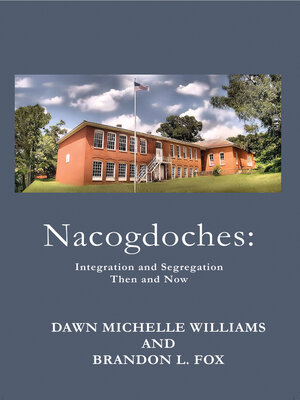
Sign up to save your library
With an OverDrive account, you can save your favorite libraries for at-a-glance information about availability. Find out more about OverDrive accounts.
Find this title in Libby, the library reading app by OverDrive.



Search for a digital library with this title
Title found at these libraries:
| Library Name | Distance |
|---|---|
| Loading... |
Thomas J. Rusk Elementary School, in Nacogdoches, Texas, houses a carved stone dedication plaque in its gymnasium's entryway. It reads "This gymnasium is dedicated to the White children of Nacogdoches." In those days, Nacogdoches was unapologetically segregated. It was a matter of not only custom but also of law.
In respect to segregation, Nacogdoches was little different than other communities in the Jim Crow South. Its location in Texas, however, helped to obscure this fact. While the US Supreme Court ended segregation in public schools on May 17, 1954, Nacogdoches schools were not forced to integrate until 1970.
This book is comprised of essays that paint a portrait of Nacogdoches both before and after integration. Readers will find a collection of essays written by scholars but also by people who have firsthand experience in conflicts that arose in Nacogdoches after 1970. The essays focus upon both the objective, measurable dimensions of race in Nacogdoches, but also upon the actual lived experiences of African Americans in rural East Texas.
In respect to segregation, Nacogdoches was little different than other communities in the Jim Crow South. Its location in Texas, however, helped to obscure this fact. While the US Supreme Court ended segregation in public schools on May 17, 1954, Nacogdoches schools were not forced to integrate until 1970.
This book is comprised of essays that paint a portrait of Nacogdoches both before and after integration. Readers will find a collection of essays written by scholars but also by people who have firsthand experience in conflicts that arose in Nacogdoches after 1970. The essays focus upon both the objective, measurable dimensions of race in Nacogdoches, but also upon the actual lived experiences of African Americans in rural East Texas.







